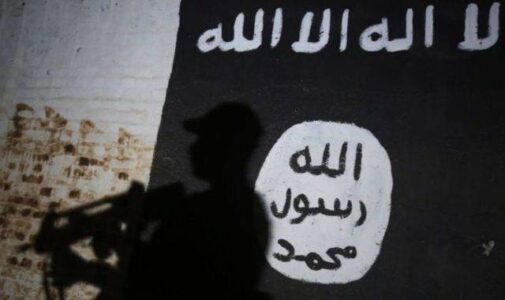
Islamic State terrorist group remains a threat in Iraq and Syria
Although the Islamic State (aka IS, ISIS, and ISIL) was considered defeated in Syria and Iraq in recent years, the jihadists have become increasingly active again. The resurgence has primarily been made possible by the COVID-19 pandemic and the United States’ quasi withdrawal.
For over a year, reports have been surfacing about ISIL’s return. January 22 marked yet a stark reminder that the group remains a deadly threat.
Thirty-two people were killed and dozens injured when members of the group actuated a suicide bombing in a bazaar in Baghdad. The attack was aimed at Shiite Muslims, the terrorist militia announced on its propaganda channel on Telegram, which also provided the names of the two attackers.
ISIL’s activity is not limited to Iraq. Twenty-one terrorist militia fighters were killed in Russian airstrikes in northeast Syria on February 22, even as ISIL has been very active in the country and has revealed astonishing logistical capacities, considering its status quo and presence in all regions of the country. And whether offensives such as Russia’s are an effective remedy against the organization remains doubtful.
Half of Syria consists of desert, and the Badia desert, in particular, has become ISIL’s new base. The Russian airstrikes took place in an area that is 40,000 square kilometres wide, which the group knows very well, including its countless caves and hiding spots. Defeating ISIS in the desert is thus almost impossible, particularly without sufficient boots on the ground.
As a result, ISIL is currently reorganizing itself in the Badia desert, while the international community lacks the will to really solve the problem, especially in northeast Syria. To be sure, in this region, as in western Iraq, ISIL no longer dominates a large contiguous area. However, according to the United Nations, there are still approximately 10,000 fighters on both sides of the Iraqi-Syrian border, hiding in desert areas that are difficult to access.
From these places, ISIL terrorizes the population in neighboring settlements, for example, near the northeast Syrian city of Deir az-Zor. The extremists take hostages to extort ransom and carry out attacks. In August 2020 alone, 100 attacks reportedly occurred in northeast Syria.
The situation is similar in Iraq. The Iraq army fought for three years to recapture a third of the country from ISIL in a bloody, grueling war.
Until the conquest by the US-led coalition in spring 2017, Mosul was the world’s most important hub for ISIL, where its central institutions were located and where many leadership cadres were staying. Its fall marked a turning point for the group. However, it only took ISIL a year to regroup in the region.
Smaller cells conducted attacks via land mines and raided checkpoints at night. Iraq’s army could hardly do anything against it. It was the first serious sign that while ISIL was defeated, it was not eradicated and thus remained a threat.
Particularly, the rural areas of Iraq were hit hard by ISIL attacks, including large-scale assaults on police stations and military bases, causing dozens of deaths. The Pentagon put the number of attacks conducted by ISIL in Iraq in 2019 at 139 per month and 1,669 for the year. These include targeted executions, kidnappings, and road bombs. Moreover, in early May 2020, ISIL targeted the country’s infrastructure and paralyzed the electricity supply for the entire Diyala Province. For months now, ISIL has been successful in conducting attacks in Iraq, and their focus is no longer only in the rural areas, but also back to the cities, as the attack in the bazaar in Baghdad – the worst in three years – indicates.
There are multiple reasons why the Islamic State was able to regain strength despite the destruction of the caliphate. Even if the Iraqi anti-terrorist units have repeatedly been able to eliminate ISIL cells in the past, they are simply overwhelmed without sufficient support. They are dependent on reconnaissance by American drones and airstrikes against ISIL hideouts.
However, the number of American forces in Iraq was reduced by more than half in 2020, to 3,000 men. And the fight against ISIL has already suffered from the US withdrawal. Since then, questions around the capacity of the local security forces to eradicate ISIL have arisen and been further complicated by accusations of corruption and government abuses.
The COVID-19 pandemic has also played a significant role in these developments. The outbreak of the virus in early 2020 forced the international coalition to suspend its combats and cease its training for Iraqi soldiers to prevent the virus from spreading among the troops.
Even though the Iraqi armed forces have restarted their training, countries like Germany have also drastically reduced their number of training personnel. ISIL has taken advantage of this new vulnerability for the past year, as it emboldened the group and led to it increased attacks in April 2020 compared to March that same year.
Source: Inside Arabia





